Ancient discoveries emerge from a remarkable peat cemetery.
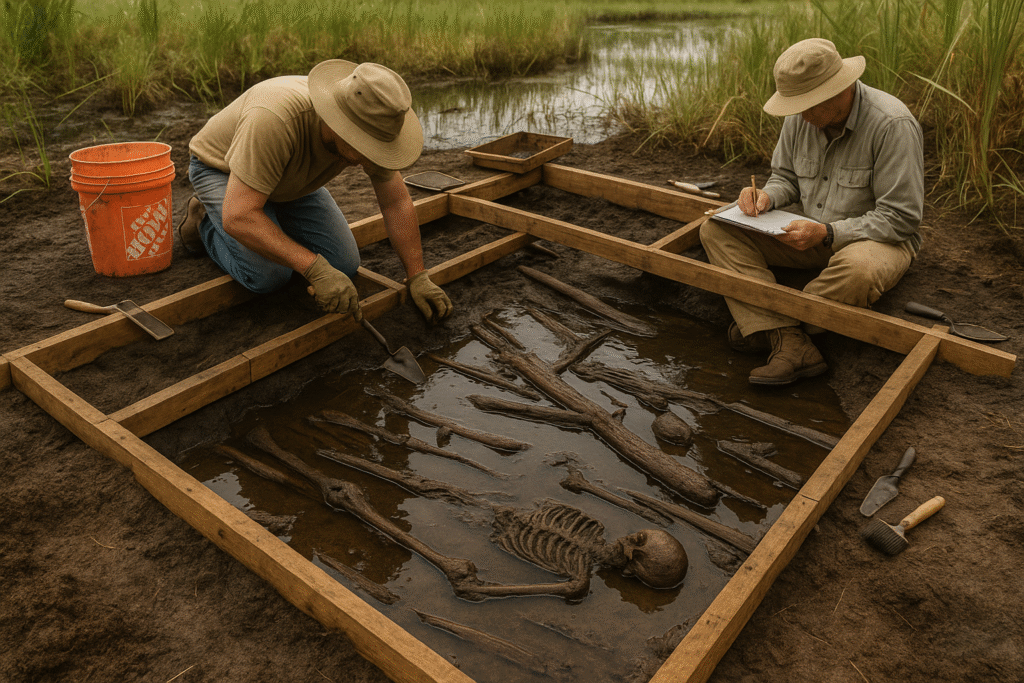
Archaeologists in Florida uncovered something few expected to survive the passage of seven thousand years. Beneath layers of peat at the Windover Archaeological Site rested human remains, wooden artifacts and woven textiles preserved with extraordinary clarity. The bog’s oxygen poor environment slowed decay so completely that brain tissue, fabric and carved wood remained visible long after they should have vanished. These discoveries reveal a world where early people lived beside wetlands, shaped tools with care and buried their dead in water with rituals that speak across millennia.
1. Wooden stakes once marked watery burial spaces clearly.
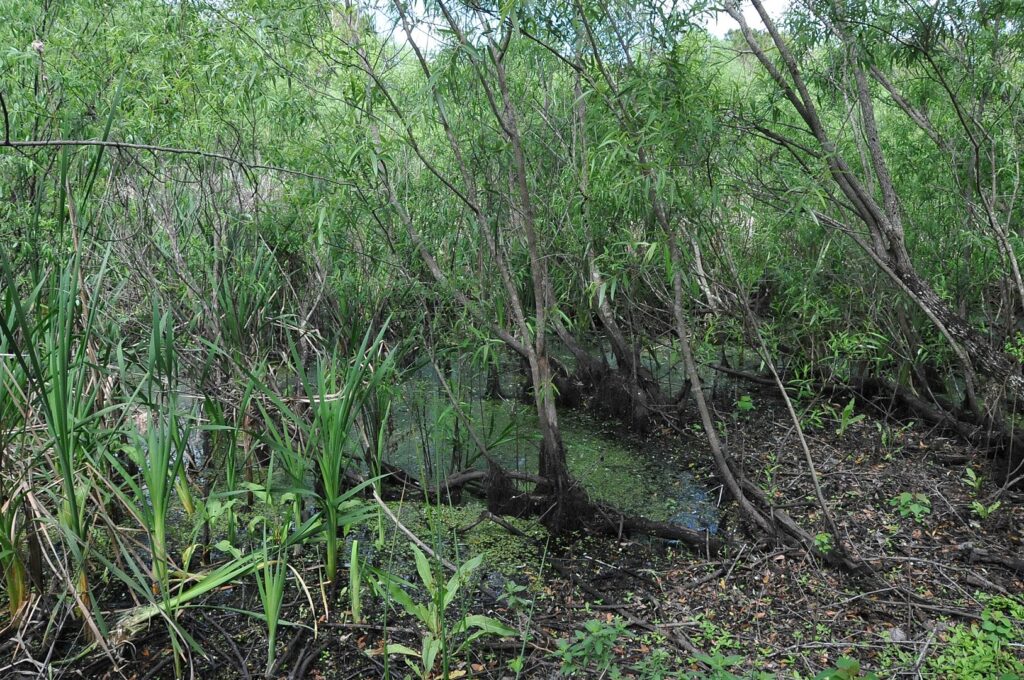
At Windover, archaeologists uncovered wooden stakes arranged around human remains, forming boundaries that surrounded each burial according to National Geographic. This structure suggests purposeful placement, with individuals laid gently into the pond before being anchored by carved wood in the soft peat.
This rare level of preservation lets researchers see not just how bodies were buried but how space and intention shaped each grave. The wooden stakes did not survive by chance. They remained because the peat locked out air, protecting the past in ways few archaeological sites ever manage to deliver. This discovery anchors everything else found at Windover.
2. Ancient soft tissue survived under protective layers of peat.
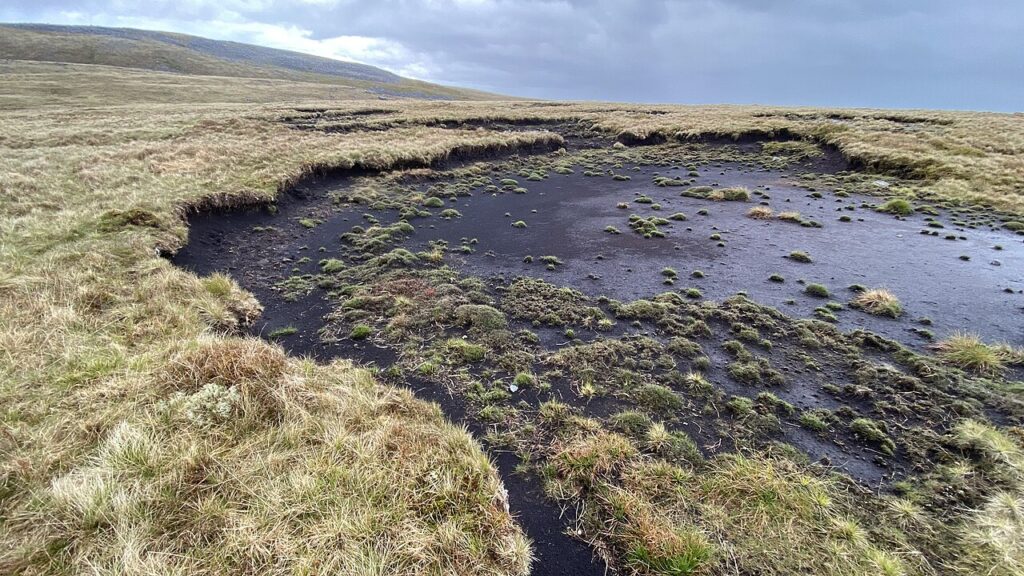
The Windover site stunned researchers when they realized that brain tissue had survived in nearly one hundred individuals, preserved thanks to the chemistry of the bog as reported by Smithsonian Magazine. Instead of bone alone, archaeologists found organic material that revealed details about health, disease and even genetic information.
This survival changes what scientists can learn from early Floridian communities. The presence of soft tissue allows for deeper study of diet, illness and population history. As the peat held these bodies in suspension, it also held knowledge that remained untouched until modern tools revealed it again.
3. Wooden tools found nearby illuminate daily life with precision.

Archaeologists discovered carefully crafted wooden tools, baskets and textile fragments interwoven with the burials at Windover, as stated by Florida’s Museum of Natural History. These items offer a rare view of early craftsmanship, showing how people shaped wood, plants and fibers with precision that rarely survives in ancient sites.
Because peat protects organic materials so effectively, researchers can study weaving patterns, tool shaping decisions and daily objects that usually disappear within centuries. These artifacts reveal how Windover people lived, worked and created, adding richness to the human stories preserved in the pond.
4. The burial pond reveals a community tied closely to wetlands.
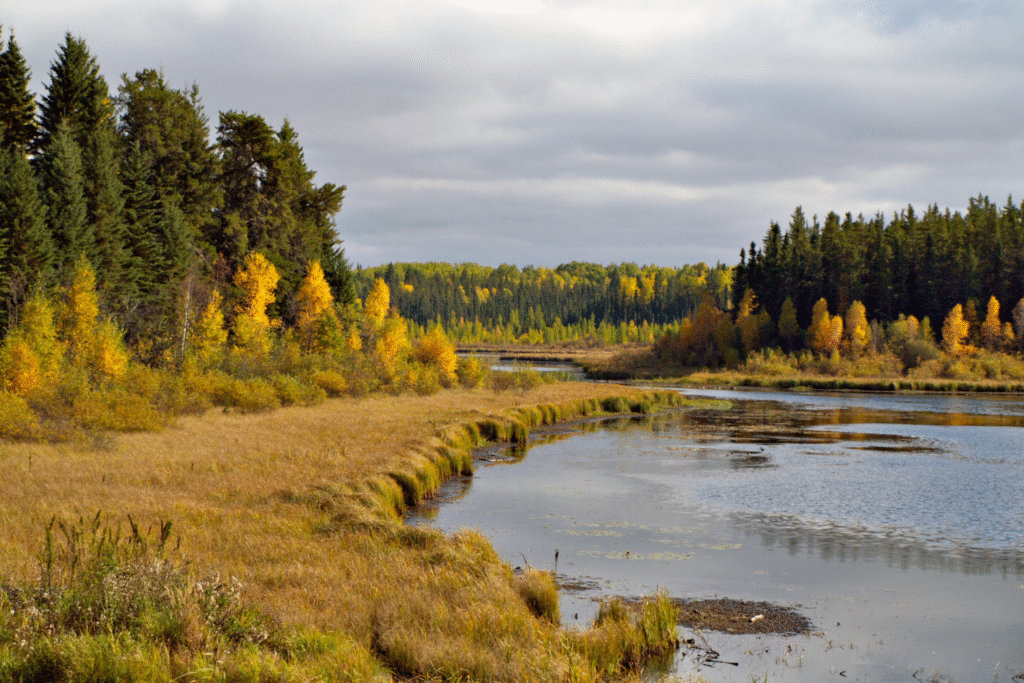
Windover’s placement in a shallow pond shows that the community’s connection to water extended beyond survival. They returned to the same watery space repeatedly, choosing it as a place where the living and the dead remained intertwined.
As the pond filled with peat, it sealed each person gently into the landscape. The choice of location suggests knowledge of the marsh’s unique preservation qualities. That awareness shaped the community’s approach to honoring their dead, leaving traces that now help researchers understand how early Floridians interpreted the world around them.
5. The preserved remains provide insight into ancient daily life.
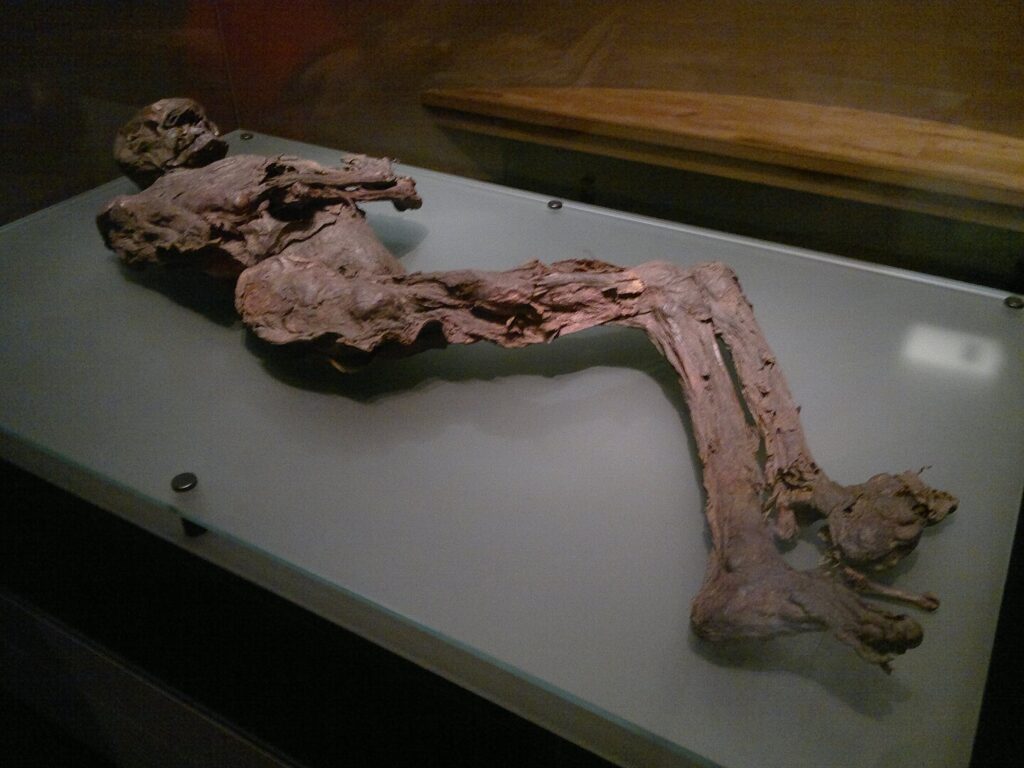
Bones recovered from Windover show patterns of wear from walking long distances, kneeling frequently and using specific tools. These details paint a picture of a community adapted to mixed wetland terrain, balancing land and water resources throughout the year.
Dietary evidence indicates a reliance on fish, plants, seeds and small game. This mixture shows that Windover people understood how to use the marsh environment without exhausting it. Their relationship with the land appears sustainable and intimate, tied to seasonal rhythms that shaped both survival and ritual.
6. The textiles uncover a level of craftsmanship rarely documented.
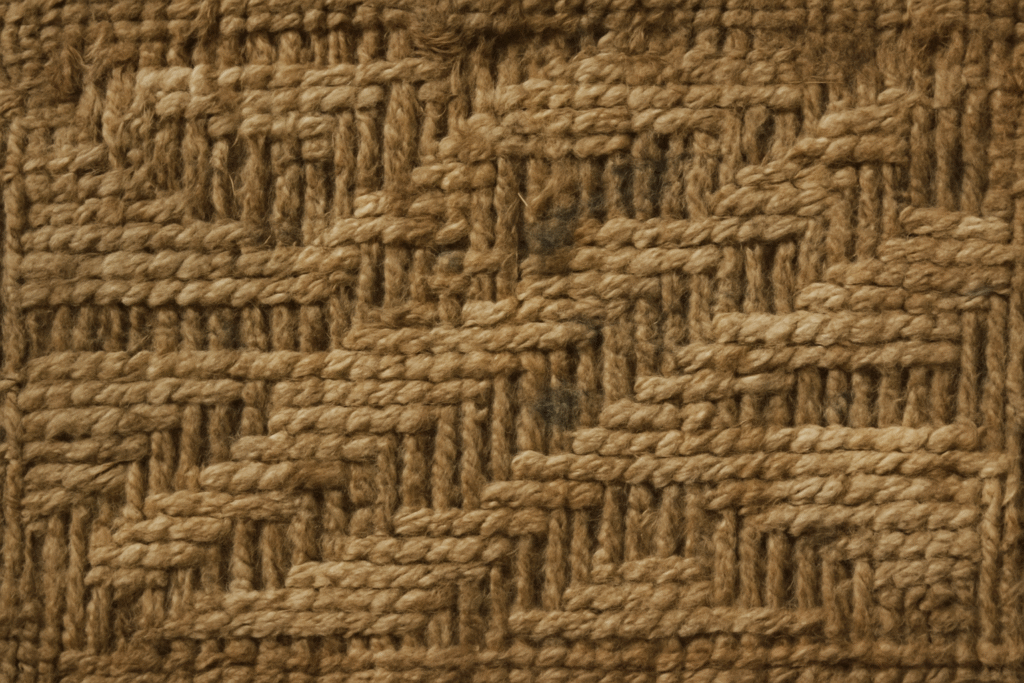
The woven cloth found at Windover demonstrates skill in twisting fibers into yarn and shaping plant material into strong, flexible fabric. The patterns show weaving techniques more advanced than typically expected for this time period in North America.
Because peat preserved these textiles so clearly, researchers can study variations in thread thickness, tension and patterning. These details reveal a community that invested time, tradition and cultural memory into the items they produced. The fabric does more than cover bodies; it links the people of Windover to a broader story of emerging technology and artistic expression.
7. The burial layout hints at ritual beyond simple interment.
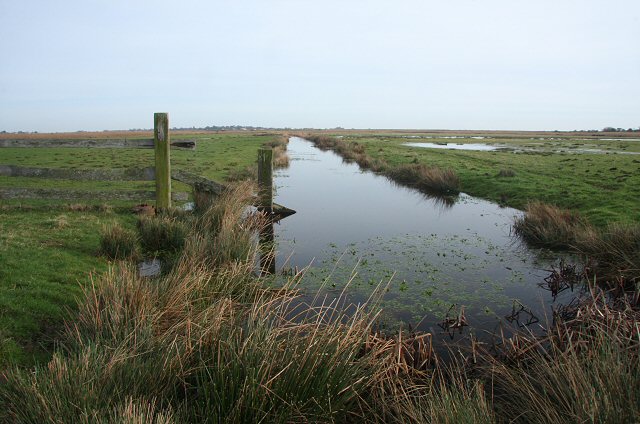
Bodies at Windover were positioned carefully, many laid on their sides with legs flexed and heads facing similar directions. This consistency suggests shared beliefs or communal customs guiding every burial.
The presence of grave goods, including tools and textiles, reinforces the idea that these interments were intentional and meaningful. Individuals were not simply placed in the pond but honoured. This level of consistency across generations hints at cultural continuity strong enough to endure through centuries of change.
8. Excavation demands careful handling to protect fragile materials.

Once peat is disturbed the preserved wood and bone can deteriorate rapidly. Archaeologists must keep items wet, manage oxygen exposure and document everything quickly to prevent loss of detail.
This painstaking process ensures that these rare artifacts remain stable enough for analysis. The marsh site reminds researchers that discovery is only half the challenge. Preservation requires just as much attention so future generations can continue learning from what the wetlands concealed for millennia.
9. The finds deepen understanding of early Floridian culture.

Radiocarbon analysis shows that Windover was used for centuries, meaning the community returned generation after generation to the same pond for burials. This long continuity hints at stable traditions and shared beliefs held firmly across time.
As archaeologists trace the oldest and youngest burials, they see a society with enduring ties to a specific landscape. The marsh became a place of memory, ritual and connection. The long timeline makes Windover not just a cemetery but a record of cultural resilience in early Florida.
10. More peat filled marsh sites likely remain undiscovered.
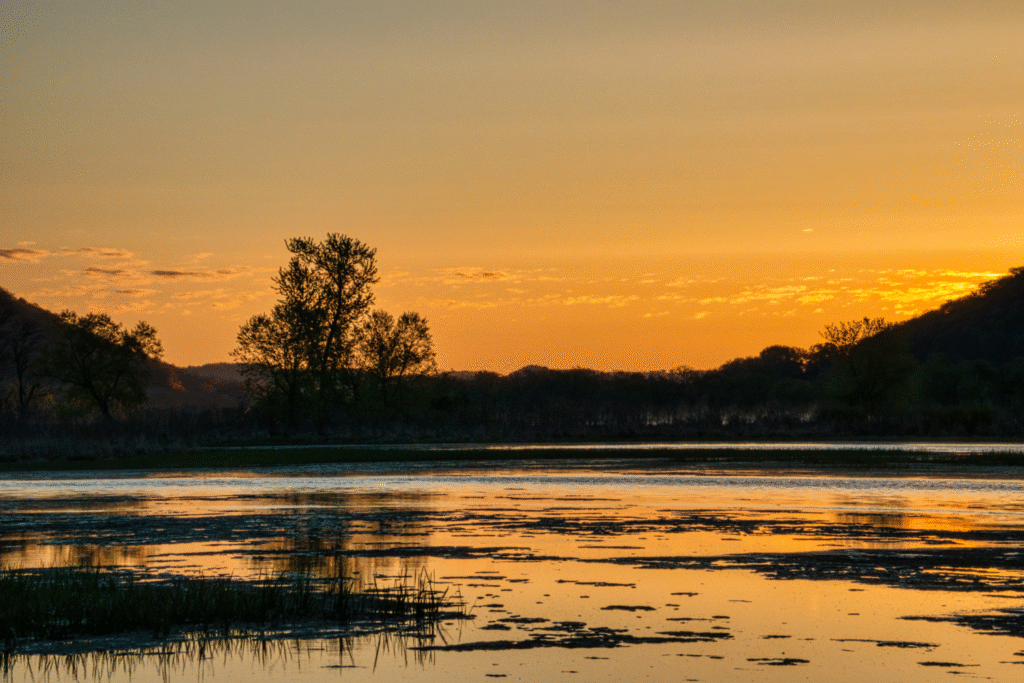
Windover proves that peat preserves organic materials with astonishing clarity, raising the possibility that similar bog cemeteries lie undiscovered across Florida. Wetlands that once seemed unremarkable may contain ancient histories waiting beneath their surfaces.
As researchers look toward other peat filled ponds, they consider how many communities might have chosen water as a final resting place. Each potential site could add another chapter to early North American history. Windover’s discoveries opened the door, and future excavations may expand that story far beyond one remarkable marsh.
